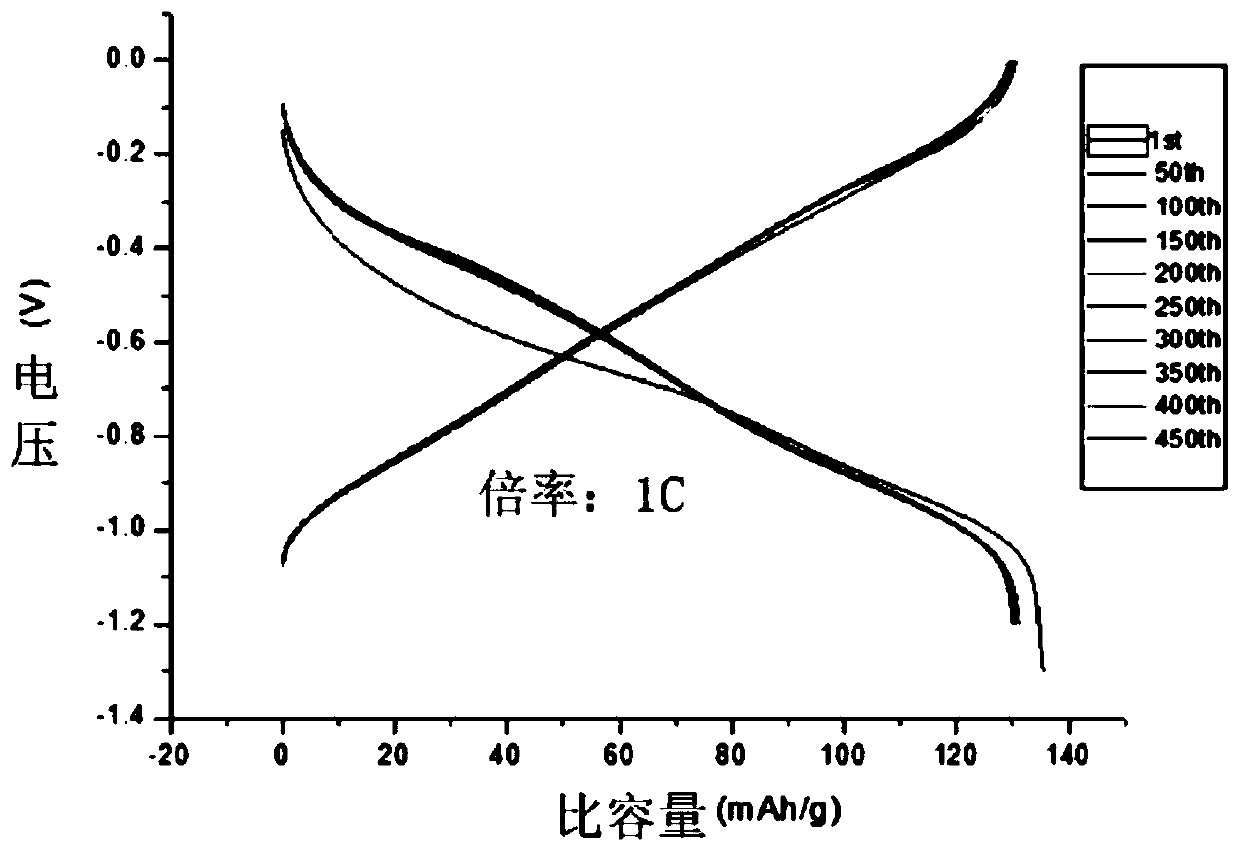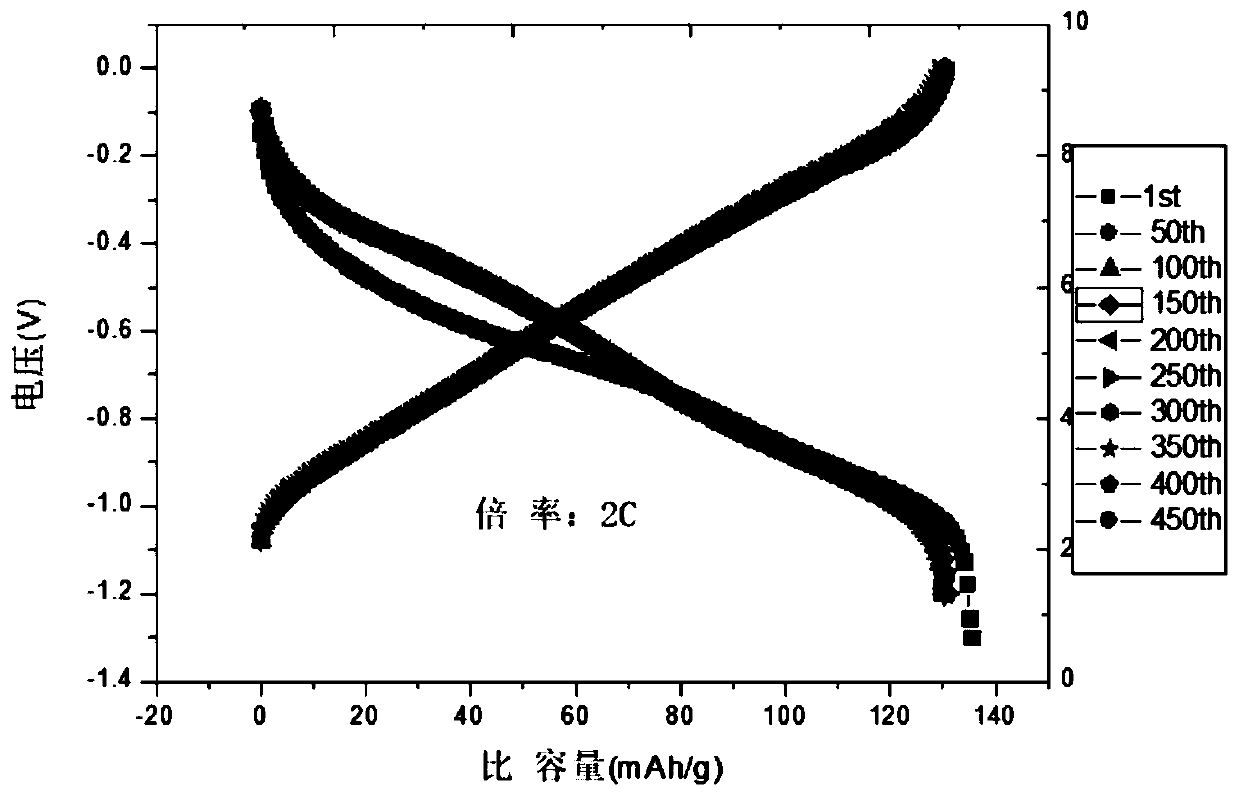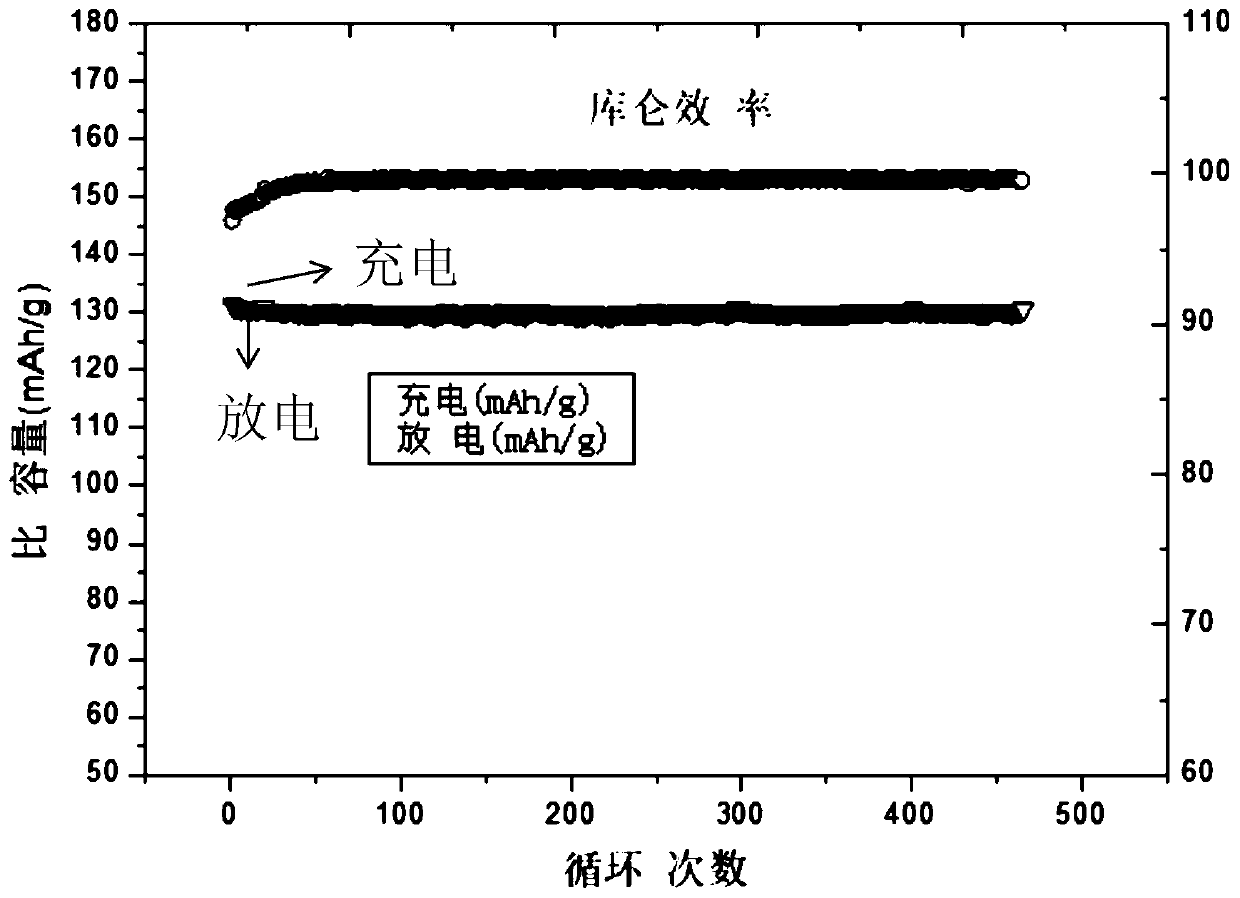Water-based ion battery negative electrode material, aqueous ion battery negative electrode and preparation method thereof, and aqueous ion battery
A technology of ion battery and negative electrode material, applied in electrode manufacturing, battery electrode, electrode current collector coating, etc., can solve problems such as low capacity, and achieve the effect of excellent water-based lithium-ion battery performance
- Summary
- Abstract
- Description
- Claims
- Application Information
AI Technical Summary
Problems solved by technology
Method used
Image
Examples
Embodiment 1
[0103] Embodiment 1 Synthesis of negative electrode active material
[0104] Step A: Add a solution of N-dimethylformamide (DMF) into a glass flask under the condition of heating in an oil bath at 50°C, and then add 1,4,5,8-naphthalene tetramethyl at a molar mass ratio of 1:1.05 The acid anhydride powder was dissolved in ethylenediamine and kept stirring, the flask was protected by argon, and the temperature was gradually raised to 150° C. and kept for 6 hours.
[0105]Step B: After the reaction is completed, centrifuge the turbid solution, remove the supernatant, wash with N-dimethylformamide, perform a second centrifugation and remove the supernatant, and then use ethanol to wash and centrifuge. The final material was dried in a vacuum oven to obtain a powdery material, designated as sample 1.
Embodiment 2
[0106] The preparation of embodiment 2 electrodes
[0107] negative electrode
[0108] Active material: polyimide organic material (sample 1)
[0109] Conductive agent: conductive carbon black (Super P carbon)
[0110] Binder: sodium carboxymethylcellulose (CMC) + styrene-butadiene rubber (SBR)
[0111] Collector: 0.1mm thick stainless steel mesh
[0112] Preparation process: The active material, conductive carbon black, sodium carboxymethyl cellulose, and styrene-butadiene rubber are mixed in pure water in a mass ratio of 8:1:0.2:0.8 to form a slurry, coated on a stainless steel mesh, and then baked Dry. Sampling and preparation with a tablet machine, the electrode area is about 1.5cm 2 , the areal density of the active substance is about 1 mg cm -2 , recorded as F-1.
[0113] The active material, conductive carbon black, sodium carboxymethyl cellulose, and styrene-butadiene rubber are mixed in pure water in a mass ratio of 8:1:0.15:0.75 to form a slurry, which is coat...
Embodiment 3
[0115] The preparation of embodiment 3 electrodes
[0116] positive electrode:
[0117] Active material: lithium manganese oxide (LiMn 2 o 4 )
[0118] Conductive agent: conductive carbon black (Super P carbon)
[0119] Binder: polyvinylidene fluoride (PVDF) emulsion
[0120] Collector: 0.1mm thick stainless steel mesh
[0121] Preparation process: Active material, conductive agent, and binder are mixed in N-methylpyrrolidone (NMP) in a mass ratio of 8:1:1 to form a slurry, coated on a stainless steel mesh, and then vacuum-dried. The electrode area is about 1.5cm 2 , the areal density of the active substance is about 5 mg cm -2 , denoted as Z-1.
PUM
| Property | Measurement | Unit |
|---|---|---|
| area | aaaaa | aaaaa |
Abstract
Description
Claims
Application Information
 Login to View More
Login to View More - R&D Engineer
- R&D Manager
- IP Professional
- Industry Leading Data Capabilities
- Powerful AI technology
- Patent DNA Extraction
Browse by: Latest US Patents, China's latest patents, Technical Efficacy Thesaurus, Application Domain, Technology Topic, Popular Technical Reports.
© 2024 PatSnap. All rights reserved.Legal|Privacy policy|Modern Slavery Act Transparency Statement|Sitemap|About US| Contact US: help@patsnap.com










